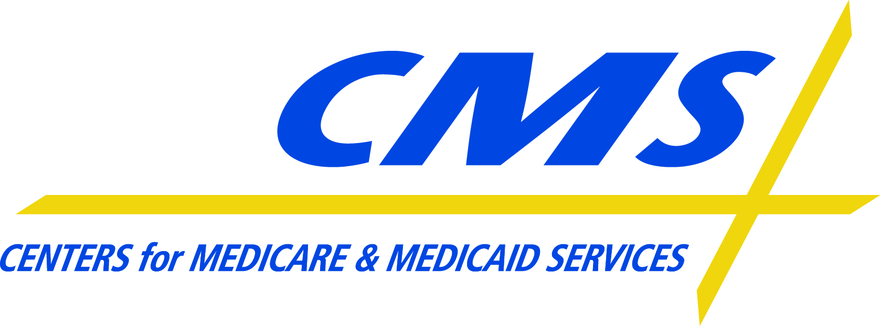ARTICLE SUMMARY:
China’s regulator has a productive week as coronavirus cases decline in the country; CMS makes moves to improve COVID-19 test reimbursement; global efforts on non-government device reviewers; and more medtech policy updates in our latest Pathways’ Picks.
The National Medical Products Administration has issued more than a dozen new medical device guidance documents since March 5, and only one relates to the coronavirus. It appears to reflect an opening of the backlog of policy documents held up by the Chinese agency’s heightened focus on the COVID-19 outbreak in recent months, we report in this week’s Pathways’ Picks. Also: coronavirus updates, global alignment on third-party device reviewers, and more.
China NMPA Back to Business
The regulatory output from NMPA is one small sign that China sees the disease as increasingly under control within its borders—new cases have dropped off precipitously in recent weeks. The recent device guidelines include (all links in Mandarin):
- An NMPA document addressing key points for review of deep-learning software to aid pneumonia diagnosis with a lung CT image. The tool can be used to triage patients for coronavirus assessment and help confirm diagnosis, the agency says.
- A globally harmonized document outlining “basic principles” of medical device safety and performance, based on an IMDRF guide.
- Clinical evaluation expectations for imaging ultrasound are summarized in a draft guidance. Comments are due April 5.
- Final guidelines on technical review issues for implantable left ventricular assist systems.
- Guiding principles for the review of nucleic acid reagents for Epstein-Barr Virus, hepatitis B, and thalassemia.
- Also: newly accepted standards for limb compression therapy devices and new guidelines for X-rays, a range of other lab diagnostics, and laser hair removal devices.
 Co-pays, Codes, and Coronavirus
Co-pays, Codes, and Coronavirus
CMS issued formal guidance this week to private-payor-administered Medicare Advantage and Part D plans that COVID-19 diagnostic tests must be considered “covered benefits” with no patient cost-sharing. The same goes for treatments for COVID-19 in a physician’s office, an emergency room, or via telehealth.
Late last week, CMS established a second billing code for COVID-19 tests, specifically to address claims for non-Centers for Disease Control and Prevention tests. The Medicare agency hopes the new code (U0002) will improve tracking and encourage testing with tests developed by academic and commercial laboratories, who were given more leeway by FDA February 29 to roll out their own novel coronavirus assays in advance of achieving FDA emergency sign-off. The new code could also be used for tests currently under development by multiple diagnostics companies. A code created by CMS last month (U0001) is intended for labs to bill for testing with the CDC COVID-19 assay, which was authorized by FDA in early February but has experienced a slow rollout after initial technical problems. Medicare claims processing systems will be able to accept these codes starting April 1 for dates of service on or after February 4. Local Medicare contractors will set the actual reimbursement rates, CMS confirmed.
Meanwhile, the American Medical Association’s CPT Editorial Panel called a special telephone meeting for March 13 to consider establishing a specific CPT code for coronavirus testing.
CPT bonus news. The out-of-cycle teleconference in response to the escalating epidemic will be held about a month after the CPT panel’s regular February meeting. Coding decisions made at that February 6-8 meeting were posted online this past weekend. COVID-19 was not addressed, but the panel did focus primarily on diagnostics, establishing a range of new Category 1 CPT codes for assays, including therapeutic drug and alcohol testing, multi-analyte assays for epilepsy, liver fibrosis, and more specific genetic and immunoassay tests captured in new “Proprietary Laboratory Analyses” codes.
 COVID-19 Roundup
COVID-19 Roundup
FDA and supply chain. The US agency announced March 10 it is postponing most foreign facility inspections that were scheduled through April due to coronavirus precautions. It may consider “mission-critical” inspections on a case-by-case basis, but generally it is relying on other tools, including border product inspections and information sharing between governments. FDA acknowledges the action could impact some product application reviews that require inspections, but says it will “try to mitigate potential impacts from this outbreak.” Meanwhile, bipartisan leaders of the House Energy and Commerce Committee are seeking a briefing on device and drug supply chain impacts from COVID-19 by March 23.
EUA template. FDA recently distributed an updated COVID-19 Emergency Use Authorization template for test-kit manufacturers that includes, consistent with guidance to clinical laboratories, a reduced requirement for testing 30 contrived samples (rather than the standard 50 for an EUA). That change reflects limited availability of reagents, FDA says.
EU harmonization urged. While about 28 COVID-19 diagnostics have been CE-marked, most were developed outside of the EU and are not widely available in Europe, MedTech Europe says. “Manufacturers with the capacity to provide COVID-19 tests in sufficient volume and with matching instruments installed across the EU are now working towards compliance with the EU regulatory framework,” the industry trade group noted in a March 10 statement. “We urge the EU Commission and the Member States to support those efforts by taking a harmonized approach to accelerate widespread access to reliable and high-quality tests.” The group also urged EU countries, including Germany and France, to better align supply-chain planning for personal protective equipment.
Third-party Reviews: US and Global
FDA finalized guidance March 11 that will support expanded reliance on third-party 510(k) reviewers. The guidance targets factors for determining which devices are eligible to be reviewed by an accredited private entity and providing a clearer framework for the third parties to seek recognition (there are currently eight accredited 510(k) reviewers) and conduct FDA-worthy reviews. The goal is to increase eligibility and significantly reduce the need for FDA re-review third-party work product.
 Earlier this week, the International Medical Device Regulators Forum issued its own draft guidance document on a similar topic: the “assessment method” regulatory authorities should use to recognize and surveil device conformity assessment bodies. The document is out for comment (through May 9) from IMDRF’s Good Regulatory Review Practices (GRRP) working group, which is developing multiple guidelines to define standards and practices for device reviewers, including non-governmental reviewers as envisioned in its latest document and the FDA 510(k) program.
Earlier this week, the International Medical Device Regulators Forum issued its own draft guidance document on a similar topic: the “assessment method” regulatory authorities should use to recognize and surveil device conformity assessment bodies. The document is out for comment (through May 9) from IMDRF’s Good Regulatory Review Practices (GRRP) working group, which is developing multiple guidelines to define standards and practices for device reviewers, including non-governmental reviewers as envisioned in its latest document and the FDA 510(k) program.
FDA’s new guidance specifically references GRRP and IMDRF’s Medical Device Single Audit Program, which relies on third-party auditors. Organizations in compliance with GRRP and MDSAP documents “do not necessarily need to generate new documentation for FDA, but rather can leverage existing documents in their applications to FDA and for ongoing recordkeeping,” the US agency states. FDA and other global regulatory officials have previously noted that the GRRP efforts are building a framework for what is hoped will eventually be a global device “single review program,” which FDA’s third-party 510(k) program can be a part of.(See “We Need to Rethink the Whole Thing”: Jeff Shuren Will Aim High on MDUFA V-Linked Reforms,” Market Pathways, October 15, 2019.)
More to Watch
 MDUFA V live. A two-year-plus process to reauthorize the FDA medical device user fee program will officially kick off April 7, with a planned public meeting the agency announced this week at its Maryland headquarters. The goal of the meeting is to convene stakeholders to discuss what is working well and what can be improved with the current MDUFA IV program (which expires in 2022) and also to think “more broadly than the MDUFA program alone” about what FDA’s device program should look like at the end of MDUFA V in 2027.
MDUFA V live. A two-year-plus process to reauthorize the FDA medical device user fee program will officially kick off April 7, with a planned public meeting the agency announced this week at its Maryland headquarters. The goal of the meeting is to convene stakeholders to discuss what is working well and what can be improved with the current MDUFA IV program (which expires in 2022) and also to think “more broadly than the MDUFA program alone” about what FDA’s device program should look like at the end of MDUFA V in 2027.
VALID unveiled. A bipartisan set of lawmakers introduced the VALID Act March 5. As previewed by Market Pathways, the bill would comprehensively reform diagnostics regulations, including bringing lab-developed test and in vitro diagnostic test kits into one, distinct FDA category. Look for more in-depth coverage of the legislation and related issues in upcoming Pathways’ coverage.
Unblocking information. The US government issued highly anticipated final regulations intended to improve interoperability with patient data in electronic health records and mobile apps. The rules, from CMS and the HHS Office of the National Coordinator for Health Technology, are expected to accelerate development by medtech and digital health companies of software products that leverage patient data.
 Modifications in Brazil. Brazil’s ANVISA regulatory agency issued new rules (link in Portuguese) outlining the petition process needed to make a change to a marketed medical device, identifying when ANVISA approval is required, when simple notification will do, and when the change can be made at any time.
Modifications in Brazil. Brazil’s ANVISA regulatory agency issued new rules (link in Portuguese) outlining the petition process needed to make a change to a marketed medical device, identifying when ANVISA approval is required, when simple notification will do, and when the change can be made at any time.
Allowing device destruction. The House Energy and Commerce Health Subcommittee marked up legislation March 11 that would extend FDA authority to destroy imported medical devices (already exists for drugs) in instances where FDA believes such medical devices are “adulterated, misbranded, or unapproved and may pose a threat to the public health.” Next, it would need to go before the full committee and prospects for congressional passage are unclear.
Virtual EU meeting.A closely watched, and closed-door, MDR-focused EU Medical Device Coordination Group meeting is going on as planned March 11-12, but due to coronavirus precautions, it is being conducted via virtual audioconference rather than as an in-person gathering in Brussels, an EU spokeswoman confirmed.
Electrosurgical guide. FDA updated its 2016 guidance document on electrosurgical device 510(k)s for general surgery indications to clarify its recommendations for thermal damage testing.
![]() Trial MyStrategist.com and unlock 7-days of exclusive subscriber-only access to the medical device industry's most trusted strategic publications: MedTech Strategist & Market Pathways. For more information on our demographics and current readership click here.
Trial MyStrategist.com and unlock 7-days of exclusive subscriber-only access to the medical device industry's most trusted strategic publications: MedTech Strategist & Market Pathways. For more information on our demographics and current readership click here.
*End of Article*

